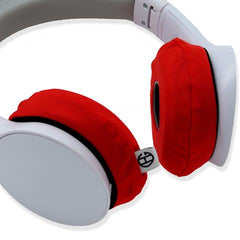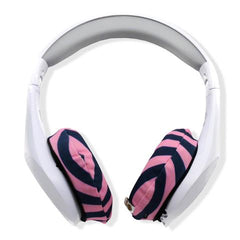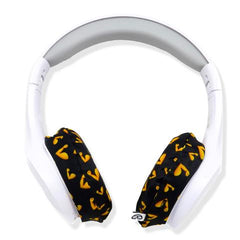QuietComfort 35 II with Real-Time Google Translate as Bose Get Ready to Market New Hearing Aid

When Google released its headphones - the Google Pixel Buds - back in October 2017, initial reviews were mixed. What Hi-FI? Gave them a disappointing 3 out of 5 stars, called their sound quality ‘so-so’ and described the charging process as being ‘fussy’.
Ouch.
One thing did, however, catch people’s attention and that was Google Translate: a real-time language translation feature allowing users to understand foreign language conversations in situ using the earbuds and the Google Assistant app. The problem was that until now real-time translation had only been available on the Pixel Buds. And seriously, who’s going to spend £159 on a pair of headphones with ‘so-so’ sound quality just for a neat translation trick? The good news now is that you can use Google Translate on any device or headphone that has access to Google Assistant and that includes the Bose QuietComfort 35 II: a headphone Bose describes as its ‘most powerful noise cancelling headphone yet’.
Foreign languages aside, it means that Bose QC 35 II headphones are a good option for anyone interested in voice control technology as they’re already optimised for use with Amazon’s Alexa and with Google Assistant. Voice control is, of course, useful for those of us who wear headphones during exercise where our hands may not always be free to adjust controls. Both the QC 25 and 35 range are compatible with the sweat-resistant headphone covers sold by Ear Hugs, so you won’t need to worry about moisture damage from excessive sweating or poor cushion hygiene; something that’s important as the QC 35 II retails at £329.95. You can read about how to protect your Bose QuietComfort 35 II headphones from sweat damage in an earlier post.
How useful Google Translate will be to you during a workout is hard to say, but it’s certainly a nice added feature and is practical if you travel a lot and use local gyms when you're away. Noise-cancelling headphones are especially useful on aircraft and on public transport, so it may well be that the translate function is more useful to you outside your workout. You can currently use Google Translate with 40 languages, just tell Assistant “Help me speak Italian” (or whichever language you need to understand) and you’re ready to go.
There’s not been much fanfare from Google. It was tech website Droid Life that noticed the text on the support page had changed, indicating that Translate had become available across all Google Assistant integrated and enabled devices.
Have you used Google Translate on your device or headphones yet? What’s your verdict? Is it worth the hype? It’s worth mentioning, too, that it's also available on a number of Sony headphones: the WI-1000X, WH-1000XM2 and WH-1000XM3 models respectively.
‘Amplify your passion’ Bose says, ‘wherever you are in the world’.
And if you live in the United States, then you may have seen the Bose commercial starring Aaron Rodgers, Quarterback for the Green Bay Packers, slipping on a pair of QuietComfort 35 II’s as he sidles along the football field calmy, serenely, quietly, to the song “Catch Me I’m Falling” sung by Kelly Finnegan. Whatever you think about their sound quality, Bose has made a good looking headphone with the QC 35 II. It’s easy to say those aesthetics don’t matter as much as sound quality and, of course, they shouldn’t, but if the rise of Beats teaches us anything it’s that design does matter.
It’s interesting, too, that Bose uses Focus On as its slogan. It seems as good as any other in an increasingly loud and communicative world (Google Translate aside) where noise-cancellation is a luxury we should all hope to afford.
But for some people noise-cancellation isn’t a pleasant detachment taken a few hours at a time, it’s a permanent isolation. So its good to hear that earlier this month the US Food and Drug Administration (FDA) gave its go-ahead for Bose to begin marketing its hearing aid device. According to Techcrunch website, Bose will call the new product The Bose Hearing Aid. The device won’t require a health care provider for fitting or assistance. Users will be able to fit and adjust the hearing aid in their own homes via an app on their mobile phone. During trials, the FDA remarked that the hearing aid performed just as well as those offered by official healthcare providers.
Of course, it’s easy to assume that hearing loss is something that comes with old age but according to the World Health Organisation (WHO) more than 1 billion young people are at risk of hearing loss and that is primarily due to the risks associated with listening to loud music through personal devices. You might be surprised to realise how much damage listening to high volumes can do to your hearing. Some headphones can reach up to 110 decibels despite the WHO advising that leisure noise is kept to around 70 decibels.

It could be a savvy move from Bose: supplying accessible hearing aids to a generation already well-versed in mobile apps and technology. Certainly, in applying their vast technological expertise to ensure that people with hearing loss are not left living in silence, is an example of the company maintaining the curiosity of their founder. After all, Amar Bose first began to develop active noise-cancelling technology on the back of a paper napkin during a noisy transatlantic flight.
The FDA released the following statement:
“The Bose Hearing Aid is a user-fitted wireless air conduction hearing aid. Air conduction hearing aids work by capturing sound vibrations through one or more microphones. The signal is processed, amplified, and played back through an earphone placed in the ear canal. Patients can adjust the hearing aid through a mobile application on their phone. This technology enables users to fit the hearing aid settings themselves, in real-time and in real-world environments without the assistance of a healthcare professional.”
It’ll be interesting to see what impact the Bose hearing aid has both in the market and for those using it. Interesting, too, to hear your experiences of the Google Translate function on the QC 35 II headphones.




